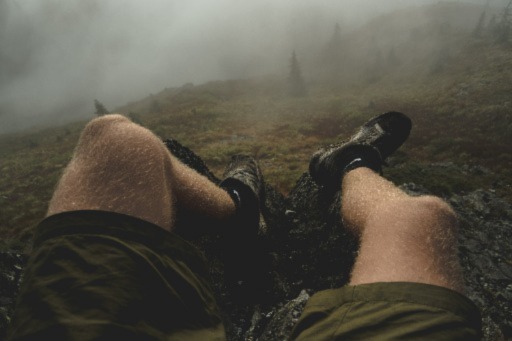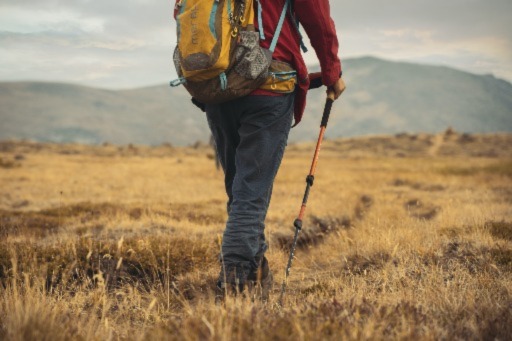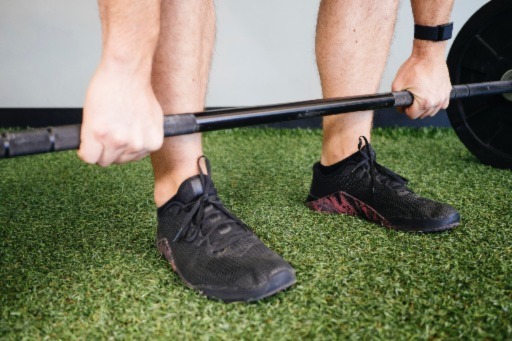Have you ever gone for a walk and suddenly felt knee pain walking downhill? Knee pain is a common complaint, and there are many possible causes. However, one often-overlooked cause of knee pain is simply walking downhill.
Because gravity is working against you, walking downhill puts extra stress on the knees, which can lead to pain. Find out how to avoid knee pain when walking down hills and learn some exercises to help strengthen your leg muscles!

What Causes Knee pain walking downhill?
The main reason your knees hurt when walking downhill is the pressure on them. When you walk downhill, your knees have to support more weight than usual, which can cause pain.
As you descend one leg at a time, the leading knee is obliged to absorb the impact of your bodyweight. This can be a jarring experience, particularly if you are descending quickly or if your leading knee is not strong and flexible.
It is important to remember that you can lessen the impact of this exercise by descending more slowly and by using your glutes and hamstrings to control the movement. This will help to protect your leading knee and ensure that you get the most out of this exercise.
Another common source of knee pain when hiking downhill comes from the contact between your kneecap (patella) and thighbone (femur), which is called patellofemoral pain syndrome.
Your patellar tendon connects the thigh muscle to the shin bone via the kneecap. It is used every time you move your knee joint. If it is strained too much, it can become irritated and inflamed. This will cause pain at and below the kneecap.
Your patella should slide smoothly up and down in the groove made by the end of your femur as your knee bends and straightens. However, if there is too much force going through the knee joint (for example, if you step down a steep slope) or if the kneecap is compressed or not aligned properly, it can cause pain.
The good news is that strengthening the muscles around your hips can help address both of these problems!
There are many other reasons why people might experience knee pain from added pressure. Here’s some of the most common causes of knee pain when walking downhill.
Hyperextension It’s not hard to overextend your knee.
Leg Muscle Imbalance or Weakness If your leg muscles aren’t the strongest or if they are imbalanced, you can be putting strain on body parts that aren’t meant to bear the weight of your steps. The good news is that this is an easy fix!
Check out the next section, Exercises to Strengthen Your Lower Body
Hip Issues – Weak or stiff hip muscles Flexibility in the hip region is essential to making sure your body moves correctly.
Your hips are central to your movements, so if they aren’t getting their full range of motion or they aren’t strong enough to support you properly, you’re going to pass the brunt of your step force to other body parts.
Improper Footwear Your footwear supports you and your movements. Do your whole body a favor and make sure it’s good!
You can try insoles to help add support to your favorite boots or shoes. I love Superfeet’s Trailblazer Comfort. I’ve been using them for about a year and half now (3 different sets), and they’re amazing every time.
How You Can Prevent Knee Pain When Walking Downhill

Use trekking poles Poles have a number of benefits and you’ll reap them all should you choose to use them to avoid knee pain. Using them when walking downhill will help disperse your weight and take some of the pressure off your knees.
Make sure you have them set to the right length, it’s usually a bit different for uphill vs downhill vs flat land.
Strengthen muscles Overall muscle strength helps make sure all your body parts work in harmony, putting pressure and weight where it needs to be to safely complete an activity.
When talking about hiking and backpacking, lower body and core strength is especially important.
Your glutes help control your hips and leg movement. When you walk or run down a hill, using your gluteal muscles will help reduce the force on your knee. This will help prevent the knee from collapsing inward, which can cause pain and damage.
Your hips control a lot of how your knees move and align. If you use your gluteal muscles when going down a slope, it will help reduce the force on your quadriceps. This will also help reduce stress on the patella.
Keeping your hips strong can help prevent your knee from moving into a position called dynamic valgus, where the femur rotates inward, and the knee drops in towards the opposite leg. This position can be prevented if the gluteal muscles are kept strong and engaged with every step.
Knee braces Wearing a knee brace can help reduce pressure and help stabilize your knee/s.
Take smaller steps The smaller the step, the less stress you’ll have on your joints and the less risk of overextending them.
Stretch Stretching before and after hiking has many benefits! Don’t skip this important step!
Check out my post Stretches for Hikers to learn the best stretches to do before and after a hike
Exercises to Strengthen Your Lower Body

Squat With it’s range of muscles worked and it’s number of variations, the squat is a fitness staple. Add squats to your routine to increase lower body strength all the way around.
Lunge Like the squat, lunges work many muscles and are great for nearly any fitness routine.
Deadlift Deadlifts work the glutes, hamstrings, hips, back, and core. Doing deadlifts to increase your overall strength will help your body handle the pressure of walking downhill more easily and safely.
Step Ups Step Ups mimic stair climbing. Going up and down stairs is a lot like elevation changes when hiking.
Calf Raises Standing calf raises help build calf strength and that will help so much when hiking! Your calves put forth much effort on the trails, so make sure they’re in tip top shape!
If you regularly experience knee pain when walking downhill, be sure to talk to your doctor. There are many treatments available that can help to reduce or eliminate the pain. With the proper treatment, you should be able to enjoy all your favorite activities without knee pain.
